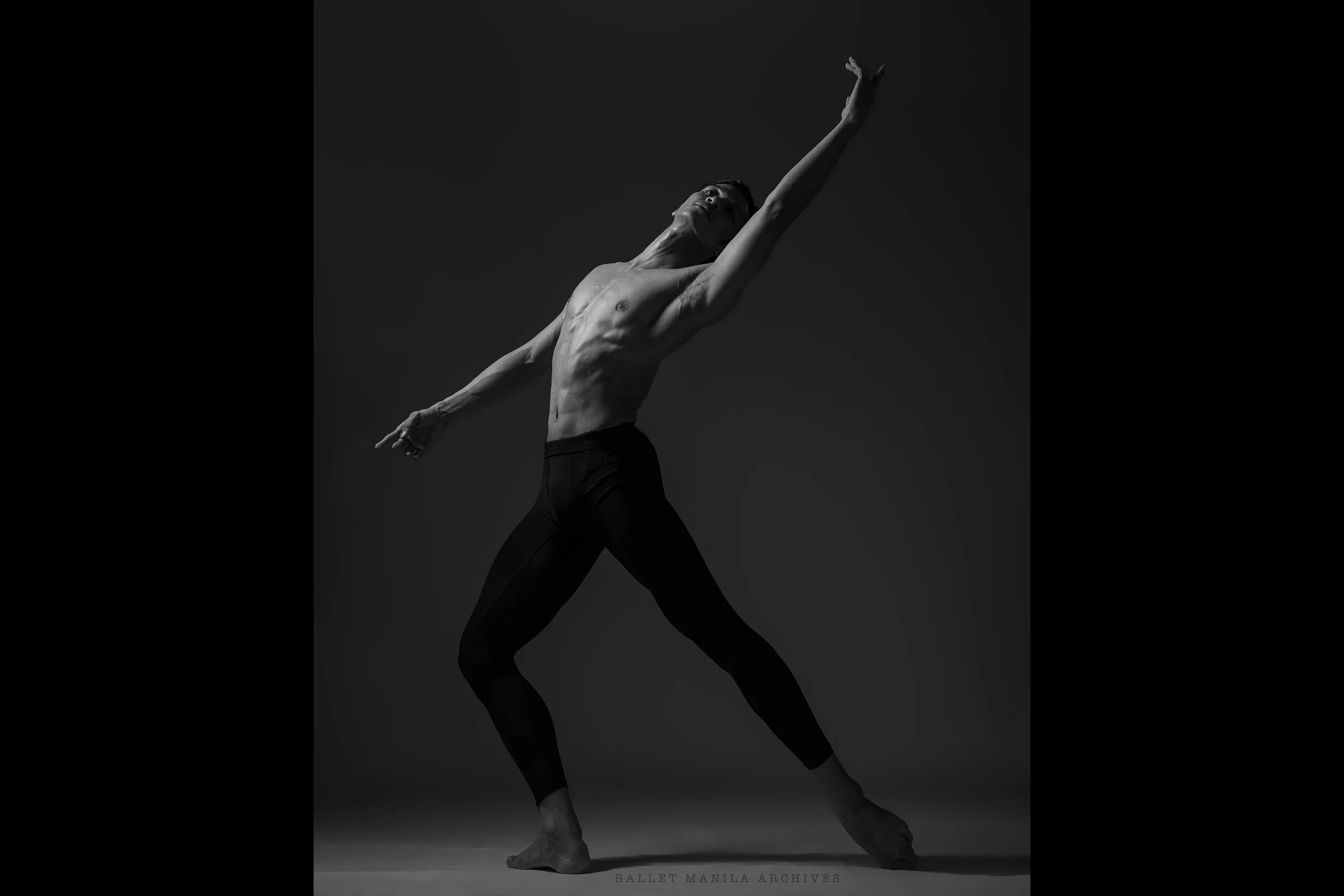Ballet Dictionary: Line
Photo by Mark Sumaylo • Text by Abigail Oliveiro
What: Line
Dancers continuously create lines and shapes through movement with their bodies. To describe “line” in ballet would be to describe an aesthetic of the entire body of the dancer creating a pleasing “image”, not necessarily a straight line. It is the curves and angles that the dancer creates in space that add up to a beautiful classical ballet line. A beautiful line can be achieved with proper technique, awareness and alignment of the entire body in space. This includes the head and eye focus, and the energy flow (continuous growth in a position, even in stillness, and not a static image). Generally speaking, what is symmetrical, the brain perceives to be pleasing to the eye. So when these curves and angles that the dancer creates follow a line or pattern of symmetry, it would create a beautiful line.
For example, using this image, the dancer is looking toward the direction that his top hand is going. Although his arm is curved, the direction of energy flow is going in a straight line. Hence the line of his arm, chin and eyes are parallel to each other, creating a nice line. Both his arms form a diagonal in a two-dimensional space and his right arm is also parallel to his right leg on fondu (a movement in which the dancer lowers the body by bending the leg). All of these angles and curves are shaping his line. The energy goes through his fingertips and toes, and his eyeline extends beyond his hands. This gives the feeling of continuous lengthening of the dancer, even though it’s a still image.
Ballet dancers practice every day with the guidance of a teacher and in front of a mirror to not only work on their technique but to polish their form in classical ballet.
Dancer: Mark Sumaylo, Ballet Manila Principal Dancer
Location: Ballet Manila Studio 2






